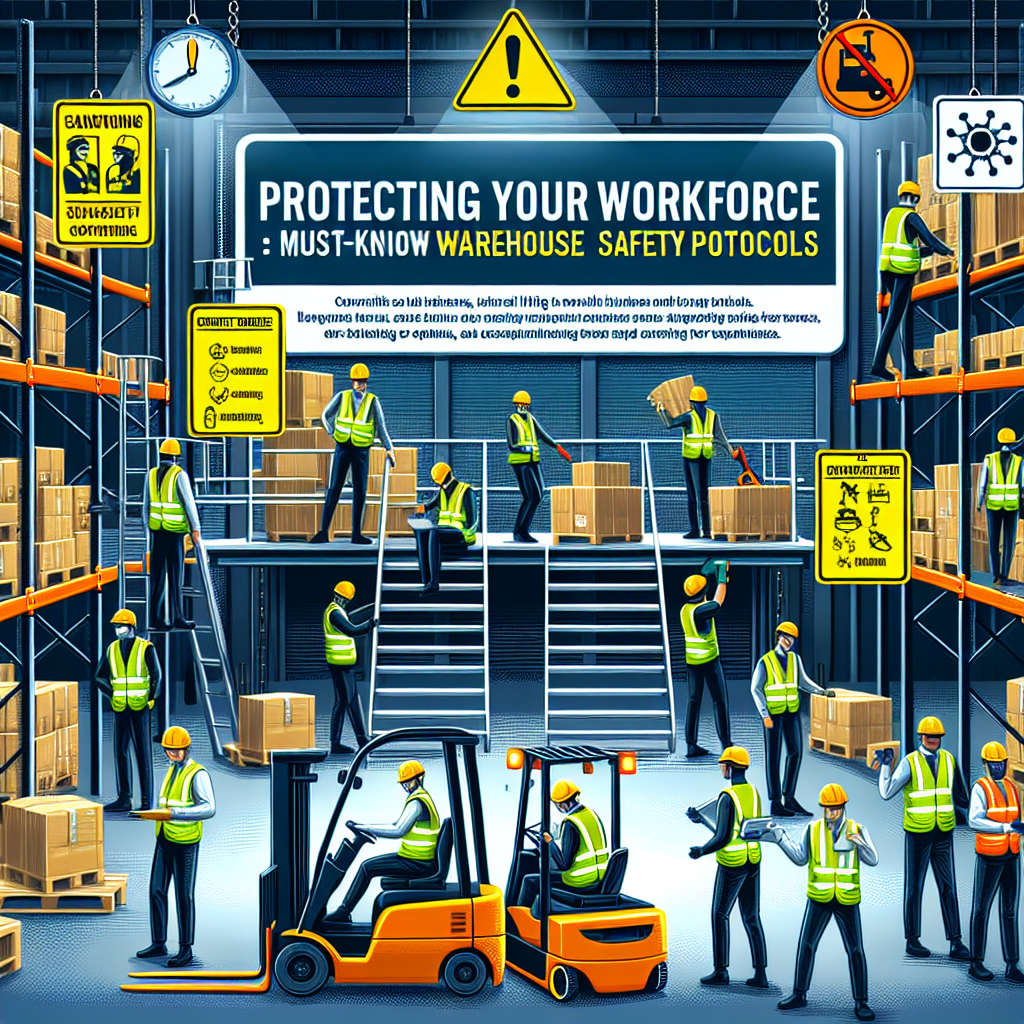In the fast-paced world of warehousing and logistics, employee safety is paramount. With thousands of workers managing heavy machinery, interacting with hazardous materials, and navigating bustling environments daily, the implementation of effective safety protocols is essential. This article delves into the must-know warehouse safety protocols to protect your workforce while creating a culture of safety.
Understanding Warehouse Hazards
Before diving into safety protocols, it’s crucial to comprehend the various hazards present in a warehouse setting. Common hazards include:
- Forklift Accidents: Collisions and tip-overs can lead to serious injuries.
- Slips, Trips, and Falls: Uneven surfaces and spills can result in accidents.
- Material Handling Injuries: Improper lifting techniques may cause musculoskeletal injuries.
- Hazardous Materials: Chemicals and other substances require careful handling to prevent exposure.
Recognizing these hazards helps in developing targeted safety measures that address specific risks.
Importance of Training and Education
Employee Awareness: The foundation of a safe work environment begins with proper training and education. New employees should receive comprehensive orientation sessions covering safety protocols, emergency procedures, and hazard recognition.
Ongoing Training: Safety training shouldn’t end after onboarding. Regular refreshers and updates keep safety at the forefront of employees’ minds. Conducting drills, safety workshops, and hands-on training ensures that everyone knows how to respond in an emergency.
Implementing Standard Operating Procedures (SOPs)
Developing Standard Operating Procedures (SOPs) is integral for safely managing warehouse tasks. SOPs provide clear and concise guidelines for employees on:
- Machine Operation: Define protocols for operating forklifts and other machinery safely.
- Material Handling: Outline best practices for lifting, carrying, and transporting goods.
- Emergency Response: Detail steps to take in case of an incident, such as fire, injury, or chemical spill.
By creating and implementing these SOPs, you can minimize risk and foster a culture of safety in your warehouse.
Safety Gear: The First Line of Defense
Proper Equipment: Personal protective equipment (PPE) is indispensable in enhancing employee safety. Ensure that your workforce is equipped with essential gear such as:
- Hard Hats: Protect against falling objects.
- Safety Glasses: Shield eyes from dust and debris.
- Steel-Toed Boots: Decrease the risk of foot injuries from heavy items.
- Hi-Vis Clothing: Improve visibility in a busy warehouse environment.
Make it a priority to provide high-quality safety gear to all employees and encourage its use at all times.
Regular Inspections and Maintenance
Conducting regular inspections and maintenance of equipment and the warehouse environment is vital for safety.
Routine Equipment Checks
- Forklift Inspections: Conduct daily pre-operation checks to ensure machinery is in good working condition.
- Fall Protection Equipment: Inspect harnesses, guardrails, and other fall protection gear frequently.
Warehouse Environment Assessments
- Floor Maintenance: Regularly check for spills or debris that could lead to slips.
- Clear Aisles: Ensure aisles are free from clutter to facilitate safe movement.
Addressing potential hazards through proactive inspections can prevent incidents before they happen.
Encouraging a Safety Culture
Creating a culture of safety involves fostering an environment where employees feel empowered to prioritize their safety and that of their colleagues.
Open Communication
Establishing open lines of communication encourages employees to report hazards or unsafe practices without fear of retribution. Regularly solicit feedback from your team about safety concerns and suggestions.
Recognition Programs
Implementing reward systems for employees who consistently follow safety protocols can reinforce a culture of safety. Recognizing team members encourages others to be vigilant and responsible in maintaining their safety and that of their peers.
Emergency Preparedness: Being Proactive
Despite a robust safety protocol, accidents may still occur. Therefore, having an emergency preparedness plan is vital.
- Emergency Contact Information: Ensure all employees have access to emergency contact numbers.
- First Aid Training: Train staff in basic first aid, so they can respond effectively to injuries.
- Emergency Drills: Conduct regular drills to ensure everyone is familiar with evacuation procedures and knows their role during emergencies.
The Bottom Line: Invest in Safety
Investing in warehouse safety protocols is not merely a legal requirement; it is essential for building trust, improving morale, and enhancing productivity. Employers must prioritize the well-being of their workforce by implementing comprehensive safety training, maintaining equipment, ensuring proper use of safety gear, and fostering a culture of safety.
Elevating your safety standards proves your commitment to your employees’ welfare, ultimately leading to a more efficient and successful operation. Protecting your workforce is not just a protocol; it’s the heartbeat of a thriving workplace.
By focusing on the human element of safety and valuing every individual as a crucial part of the team, you can create an environment where safety thrives, and employees feel valued and secure.


